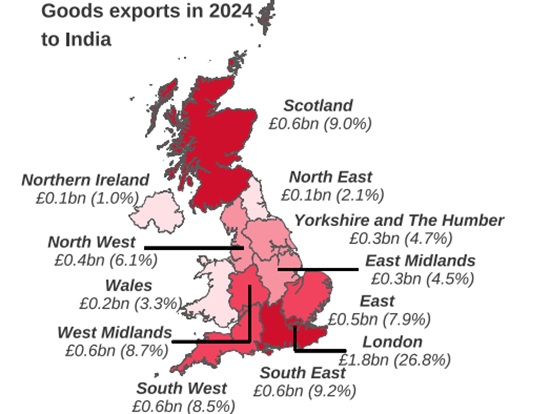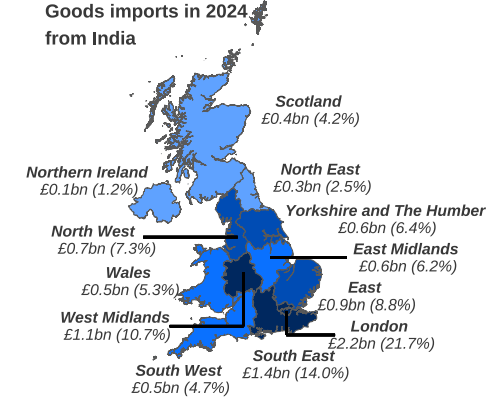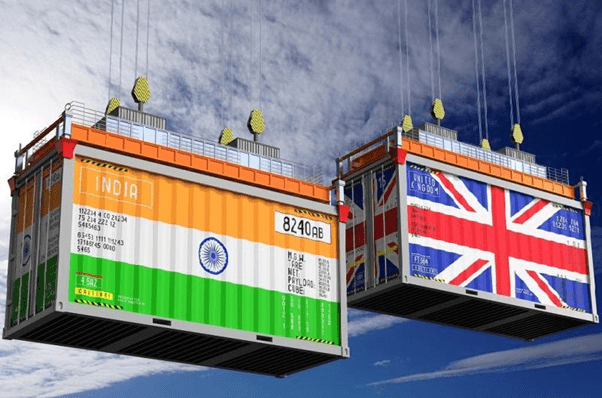On May 6, 2025, after three years and 14 negotiation rounds, the UK and India agreed to a landmark Free Trade Agreement—Britain’s largest bilateral deal post‑Brexit, and the most ambitious trade pact India has ever finalized.
On 24th July 2025, the Prime Ministers of the two nations signed the landmark Free Trade Agreement (FTA), poised to significantly influence and reshape the economic landscapes of both countries.
So, what is next for businesses in these two powerhouse nations – and why should they gear up for change?
- Macro Impact Highlights
- Tariffs: India has some of the highest tariffs on imports. As per this deal, it will reduce levies on 90% British products sold in India. One of the big ambitions of this deal is to make 85% of British products sold in India tariff free, within a decade. As part of the deal UK has also agreed to cut down its own tariffs, which were relatively lower than India, on some products. This will result in 99% of India’s exports to the UK will face no duties.
- Increase in bi-lateral trade: This agreement is expected to boost bilateral trade by £25.5 billion yearly and could hit $120 billion by 2030, increasing trade volume by up to 40%. As per the recent report published by Department for Business and Trade, the map below shows the value of UK goods exports and imports between each UK region and India in 2024.


- Estimated to increase UK GDP by ~£4.8 billion annually, with wider economic gains—wages up by £2.2 billion.
Although the deal might take up to a year to kick in, early projections hint at a $6.4 billion boost to the UK economy—no small feat, even against its massive $3.8 trillion GDP in 2024.
- Beyond Tariffs: Some of the other key strategic provisions
- Social security accord– Double Contributions Convention exempts seconded professionals from paying in both countries for up to 3 years
- Customs & logistics streamlining—paperless trade, clearance within 48 hours for compliant shipments
- Enhanced IP protections – GIs, copyrights for 60 years, plus mutual recognition of professional qualifications
- Support for digital & telecom trade, fintech integration, sustainable standards, and environmental cooperation
- Key sectors and opportunities:
| Sector | Opportunity | Key Provisions |
| Tech, Fintech, EdTech, IT services | Leverage tariff cuts + social security & mobility
India’s IT and SaaS firms could benefit from streamlined data and visa regulations, making it easier to deploy talent and expand in the UK. Meanwhile, UK fintech and AI startups could find fertile ground in India’s digital transformation initiatives. |
Three-year DCC, regulatory alignment |
| Life sciences & medical devices | Reduce entry costs into India.
Faster UK approvals may give India’s generics sector a major boost, while British pharma firms stand to unlock India’s robust R&D and cost-efficient manufacturing edge. |
Tariff‑free access for 66% of exports |
| Gem & Jewellery | UK import relaxations could double exports | Rising from $400M to $1 B in two years |
| Advanced manufacturing & auto parts | New supply chain hubs in India
Tariff reductions are setting the stage for a powerful shift—UK EV companies can now tap into India’s manufacturing muscle and surging demand for sustainable transport solutions |
Guaranteed tariff reduction to ~10% |
| Food & Drink Sector | Massive opportunity for the Scotch whisky and gin manufacturers | Tariffs will drop from 150% to 75%, eventually to 40% |
- Future: Making Business easier and navigating the red tape
This FTA promises streamlined regulations, consistent standards, and digital-first customs processes—especially empowering for SMEs navigating global markets. Add to that the elimination of tariffs and stronger dispute resolution systems, and you’ve got a future where cross-border business just makes sense. Along with the tariff cuts, one of the biggest advantages of this deal would be that UK firms will gain much better access to the India procurements (£38billion annually).
Though, there are now massive opportunities on the horizon, and India still stands out as the fastest-growing major economy, with a population exceeding 1.4 billion and a rapidly expanding middle class whose appetite for imports is set to rise sharply over the next decade, but it still remains a complex market for foreign investors. Some of the key challenges include:
- Regulatory ambiguity: Company incorporation rules are stringent, regulatory approvals can vary across different states and are often subject to unpredictable shifts.
- Infrastructure Bottlenecks: Whilst it’s massively improving, logistics and connectivity can still hinder supply chains.
- Bureaucracy: Procedural delays and opaque licensing can slow market entry and expansion.
How Technovedge could empower your growth
“As the trade landscape shifts between UK-India, is your business ready to seize the opportunity?”
At Technovedge, we’re not just advisors—we’re expansion partners which stays with you on each step, help you navigate the red tape and make your UK to India or India to UK market expansion as smooth as possible.
If you are looking to be ahead of the curve and have questions about UK and Indian markets, please contact us using the below ‘button’ and book your 45 mins free consultation call.







